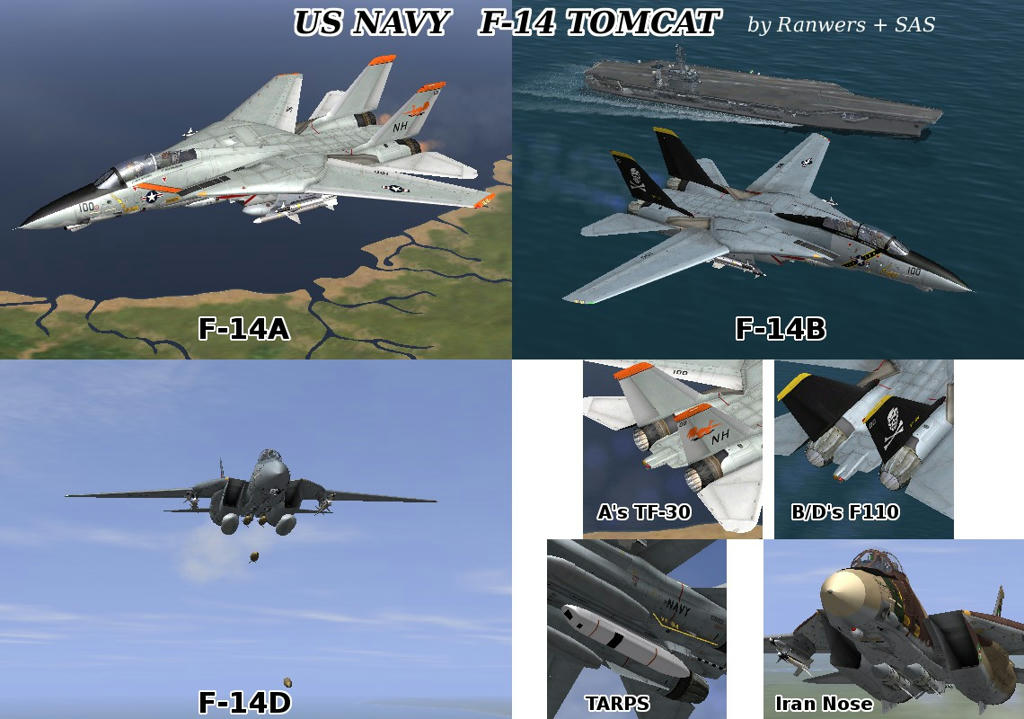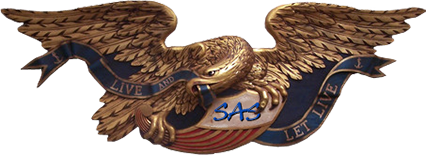Public release V1.10 and V1.21 patch.

Requirements:
Jet Era v1.33 or later
https://www.sas1946.com/main/index.php/topic,15649.0.htmlSAS Common Utils https://www.sas1946.com/main/index.php/topic,40490.0.htmlHD / True Color Mod v1.1 or later
https://www.sas1946.com/main/index.php/topic,42744.0.htmlWEAPONS PACK VER. 1.3 https://www.sas1946.com/main/index.php/topic,48603.0.htmlSAS Engine MOD 2.8.18 western (or later)
https://www.sas1946.com/main/index.php/topic,52489.0.htmlWeapon pack Generation 2016-iii (22/Jan/2019 or later) ,
Jet Pit Common materials (26/Feb/2019 or later)
https://www.sas1946.com/main/index.php/topic,53426.0.htmlDownload: https://www.mediafire.com/file/1ss1mafl30itozb/F-14_V1.10_20190226.7z/file (
https://www.mediafire.com/file/vnokhn3b3bw7oyp/F-14_V1.11_patch_20200128.7z/file )
https://www.mediafire.com/file/qg8qqhwlmat8gwm/F-14_V1.21_patch_20200215.7z/fileV1.21 patch can be installed on V1.10 .
Skins:
https://www.mediafire.com/file/hppetip02uoanun/Re-Painted_SKINS__F-14_series_05-05-2017.7zair.ini
F-14A air.F_14A 1 NOINFO usa01 SUMMER
F-14B air.F_14B 1 NOINFO usa01 SUMMER
F-14D air.F_14D 1 NOINFO usa01 SUMMER
stationary.ini
[Self_StationaryPlanes]
F_14A vehicles.planes.F_14static$F_14A 1
F_14B vehicles.planes.F_14static$F_14B 1
F_14D vehicles.planes.F_14static$F_14D 1
technics.ini
//======================================================================
//
// Self Stationary planes
//
//======================================================================
[F_14A]
Description F_14A
Icon Plane
Class air.F_14A
PanzerBodyFront 0.004
Explode WagonMetal
[F_14B]
Description F_14B
Icon Plane
Class air.F_14B
PanzerBodyFront 0.004
Explode WagonMetal
[F_14D]
Description F_14D
Icon Plane
Class air.F_14D
PanzerBodyFront 0.004
Explode WagonMetal
i18n/ plane.properties
F-14A F-14A, Tomcat, 1974
F-14B F-14B, Tomcat, 1987
F-14D F-14D, Super Tomcat, 1991i18n/ weapons.properties
textfile in the archive.
Skins folders:
...\PaintSchemes\Skins\F-14A
...\PaintSchemes\Skins\F-14B
...\PaintSchemes\Skins\F-14D
credits:Ranwers: All 3d workswestern: Java, small 3d retouch, weapons pack features and Jet Pit common materials
max_thehitman: 3d help & skins
Vega: Java and FM
PA_Jeronimo: 3d improvements
Omit things (Not to claim):
- Air Refuel
- AI's aggressively Wing sweep usage
- Historical Cockpit analog gauges
- Cockpit panel night illumination (some night panels mismatch to daytime ones)
- Cockpit HUD
- Cockpit Radar (A/B) or Multi function HDD (D)
- Text assistance about Radar (WSO) / IRST / TV Camera is done only about 1 enemy.
- AIM-54 multi targeting.
- Combat flap degree manual operation.
- Flap and Wing sweep lock limit each other relatings.
- Laser lock position minute adjustment.
Extra implements:
- VarWing is controlled / limited by historical flight computer workings.
+ Player operation is in 4 statuses: (Manual position is automatically limited in speeds)
Auto / Manual open (forward) / Manual keep / Manual close (backward) / Bombing fixed
+ Folding Wings
- Anti-Collision lights (Anti-Collision lights key)
- Formation lights (Formation lights key)
- Self Stationary Plane folds wings
- Easy implement of DLC (Direct Lift Control) on landing with flaps full down
+ DLC engage / cancel by MISC_10 key, increase / decrease decent rate by Bombsight Distance keys.
+ External spoiler visual reflects DLC status.
- Spoiler works as Ground Spoiler on ground (not carrier deck) with Airbrake opening.
- Laser designator cockpit only with LGBs. MISC_7 key works Laser pos lock. MISC_10 key Off Laser.
- Bingo fuel MISC_6 key.
 Author
Topic: F-14 Tomcat by Ranwers v1.10 + v1.21 patch (15/Feb/2020) (Read 76032 times)
Author
Topic: F-14 Tomcat by Ranwers v1.10 + v1.21 patch (15/Feb/2020) (Read 76032 times)


